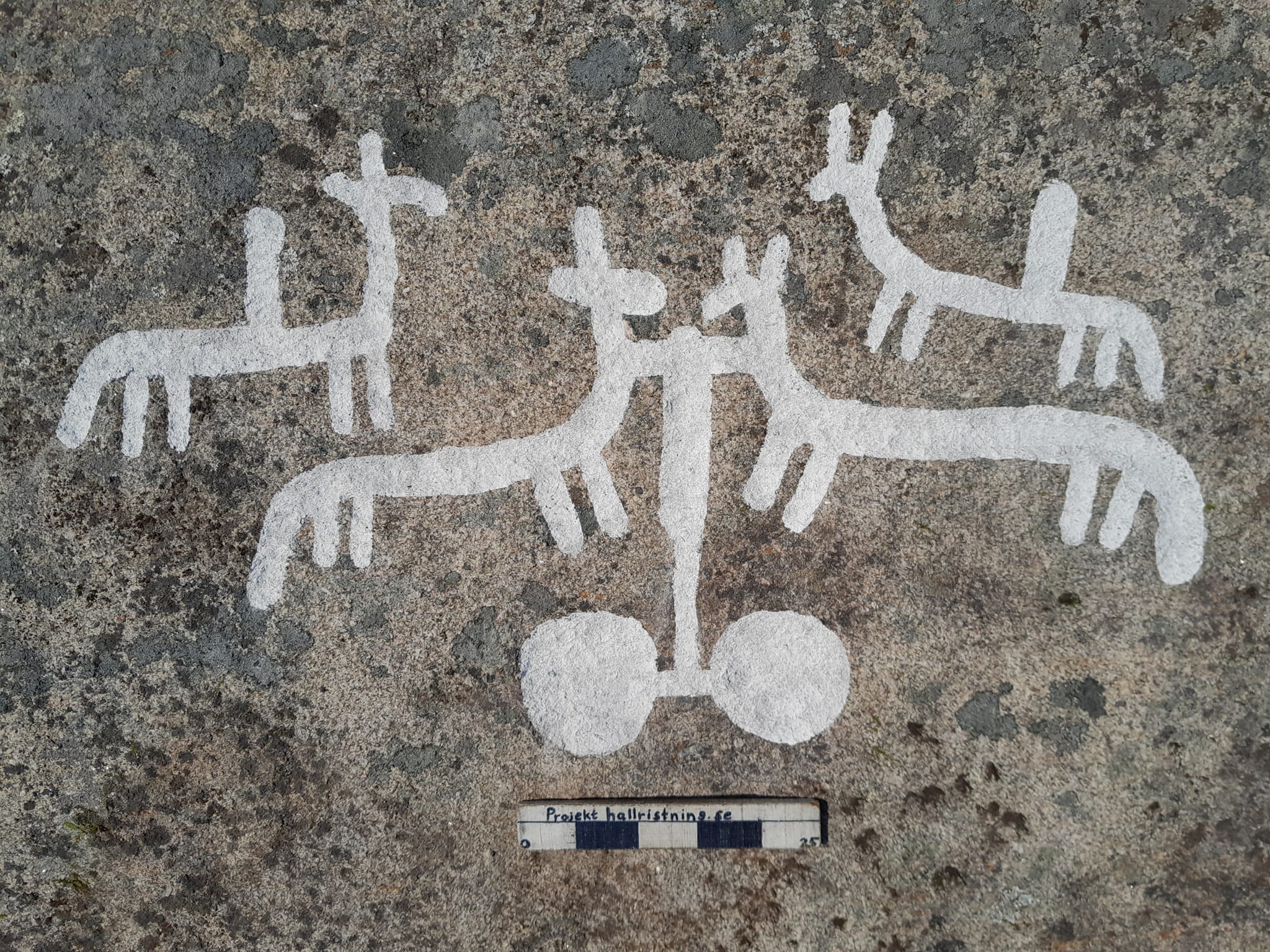
In early May, a group of researchers scouring the western Swedish province of Bohuslän spotted irregular markings on a moss-covered rock face. They seemed man-made and so the team carefully removed the vegetation and uncovered scores of rock carvings, around 40 in total, depicting ships, animals, and people.
The rock carvings, or petroglyphs, date back around 2,700 years and are the latest find in Bohuslän, an area known for its rock art, most notably the Bronze Age images at Tanum, a UNESCO site. The team believe it is Bohuslän’s greatest discovery this century.
The rock in Bohuslän on which the petroglyphs were discovered. Photo: The Foundation for Documentation of Rock Carvings in Bohuslän.
The recently discovered petroglyphs were found on a steep rock face that once formed the edge of an island before sea levels gradually dropped an estimated 40 feet over the course of several hundred years. This has led researchers to speculate the artists used boats, or a form of scaffolding laid on ice, to reach the rock surface. Indeed, the researchers who were conducting fieldwork for the Foundation for Documentation of Bohuslän’s Rock Carvings built scaffolding of their own to reach and document the rocks.
The designs were made through a laborious process of smacking stones against the granite rock that exposed an underlayer of white. This color, in addition to their size, made them highly visible from both the mainland and passing ships.
One of the petroglyphs discovered at the site. Photo: The Foundation for Documentation of Rock Carvings in Bohuslän.
“What makes the petroglyphs completely unique is that they are located three meters above today’s ground surface,” Foundation for Documentation of Bohuslän’s Rock Carvings wrote in a statement. “The motifs lie on an even line that follows the height of the sea surface from approximately 700 to 800 BCE. The motifs are also stylistically consistent with this time period.”
One of the petroglyphs discovered at the site. Photo: The Foundation for Documentation of Rock Carvings in Bohuslän.
The latest group of petroglyphs found includes a 13-foot-long ship, as well as carvings of people, chariots, carts, and horses. Their meaning remains unknown. Sometimes petroglyphs were used to mark out territory, though researchers believe the repeated motifs carved into rocks outside the town of Kville may suggest they were used to tell a narrative.
Lennart Larsson, on whose farm the rock carvings were found, was pleased by the discovery. “I haven’t actively been looking for petroglyphs, but it’s a lot of fun,” he told SVT, the country’s national broadcaster in interview. “I can sit at home on the balcony and watch the stick figures and the ships outside.”
More Trending Stories:
Is Time Travel Real? Here Are 6 Tantalizing Pieces of Evidence From Art History